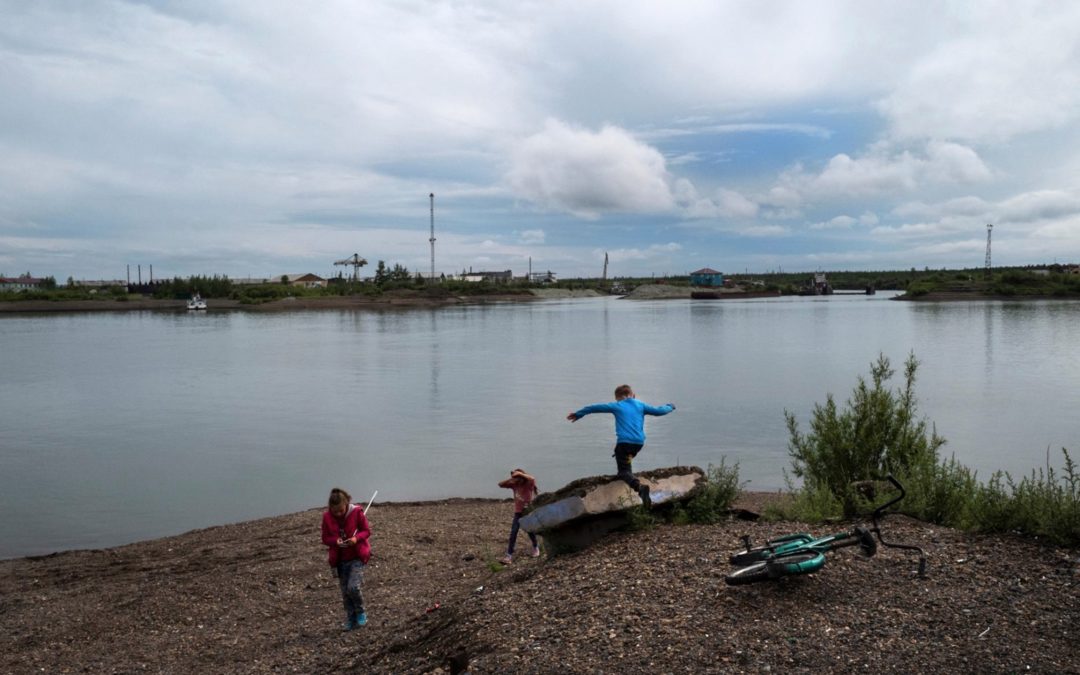SOURCE: National Geographic
DATE: June 23, 2020
SNIP: An extended heat wave that has been baking the Russian Arctic for months drove the temperature in Verkhoyansk, Russia—north of the Arctic Circle—to 100.4°F on June 20, the official first day of summer in the Northern Hemisphere. This record high temperature is a signal of a rapidly and continually warming planet, and a preview of how Arctic warming will continue in an increasingly hot future, scientists say.
“For a long time, we’ve been saying we’re going to get more extremes like strong heat waves,” says Ruth Mottram, a climate scientist at the Danish Meteorological Institute. “It’s a little like the projections are coming true, and sooner than we might have thought.”
Saturday’s record wasn’t just a quick spike before a return to more normal summer temperatures for the Russian Arctic: The heat wave behind it is projected to continue for at least another week. It was the hottest temperature ever recorded in the town, where records have been kept since 1885.
[C]limate change is “loading the dice” toward extreme temperatures like the one recorded this week…. The Arctic is warming more than twice as fast as the rest of the planet: Baseline warmth in the high Arctic has increased by between 3.6 to 5.4°F(2 to 3°C) over the past hundred or so years. About 0.75°C of that has occurred in the last decade alone.
That means any heat waves that hit the region are strengthened by the extra warming. So the average warmness of a summer increases, and the extremes do too.
This month’s super-hot day emerged from a potent mix of factors. First, climate change nudged base temperatures up. Then, western Siberia experienced one of its hottest-ever spring seasons, according to climate scientists at the EU’s Copernicus Climate Change Service. Since December, air temperatures in the region have averaged nearly 11°F (6°C) above the average seen between 1979 and 2019. The high heat is also likely well above the average seen in any similar six-month stretch going back to 1880. In May, air temperatures hovered some 18°F (10°C) above the “normal” May average of 33.8°F (1°C )—something that would be likely to occur only once in 100,000 years, if human-caused climate change hadn’t thrown a wrench in the climate system’s plumbing.
The warm winter and hot spring meant that the snow usually blanketing the ground across much of the region melted about a month earlier than normal. Bright white snow plays a crucial role in keeping parts of the Arctic cool, by reflecting the sun’s incoming heat. Once it had gone away, dirt and plants readily soaked up the heat instead.
Then, the weather conditions aligned. A big, high-pressure system settled into place over western Siberia, where it stalled. These kinds of systems often have clear, cloudless skies—perfect for solar heat to shine through unobstructed, straight onto the hot Siberian ground.
In recent years, the effects of these kinds of immobile heat waves have become more obvious across the Arctic. In 2012, 97 percent of the Greenland ice sheet’s surface got so warm it turned essentially to slush. In 2016, it was so warm in High Arctic Svalbard, Norway, that rain fell instead of snow for part of the winter. Last summer, the edges of the Greenland ice sheet experienced up to three extra months of melting weather. Limpid blue pools formed on its surface; floods of melt gushed off the edge of the continent, and fires broke out in its sparse landscapes after a heat wave parked over the island for weeks.
The poles are warming up more quickly than the rest of Earth because of a phenomenon called “polar amplification.” The sea ice that used to blanket much of the Arctic Ocean provided a bright white cap across the northernmost reaches of the planet. Like the snow that reflects incoming solar radiation in Siberia, the ice bounced the sun’s heat back toward space.
But as Earth has warmed, there’s less sea ice covering the Arctic Ocean, leaving behind dark waters that absorb much more heat. Sea ice forms less readily in that warm water, leading the water to absorb even more solar heat, and the system goes on a self-reinforcing loop.
In June, defrosted soils may have led to the collapse of a diesel storage tank in Siberia, spilling 20,000 metric tons of fuel into a nearby river.
Fires have also been smoldering across the Russian Arctic. The overwarm spring dried out both soils and vegetation, leaving them primed to burn, and over 12 million acres were on fire as of early June, according to Russia’s forest service.

